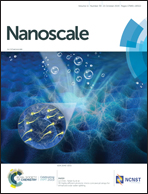Construction of Mn–Zn binary carbonate microspheres on interconnected rGO networks: creating an atomic-scale bimetallic synergy for enhancing lithium storage properties†
Abstract
Transition metal carbonates (TMCs), as promising anode materials for high-performance lithium ion batteries, possess the advantages of abundant natural resources and high electrochemical activity; however, they suffer from poor Li+/e− conductivities and serious volume changes during the charge/discharge process. Constructing multicomponent carbonates by introducing binary metal atoms, as well as designing a robust structure at the micro and nanoscales, could efficiently address the above problems. Therefore, single-phase MnxZn1−xCO3 microspheres anchored on 3D conductive networks of reduced graphene oxide (rGO) are facilely synthesized via a one-pot hydrothermal method without any structure-directing agents or surfactants. Due to the well-designed architecture and atomic-scale bimetallic synergy, the MnxZn1−xCO3/rGO composites show superior lithium storage capacity, good rate capability and ultra-long cycling performance. Specifically, the Mn2/3Zn1/3CO3/rGO composites could deliver a high capacity of 1073 mA h g−1 at 200 mA g−1. After 1700 cycles at a high rate of 2000 mA g−1, a stable capacity of 550 mA h g−1 can be maintained with the capacity retention approaching 88.6%. Density functional theory (DFT) calculations indicate that the partial Zn substitution in MnCO3 could significantly decrease the band gap of the crystal, resulting in great improvement of electric conductivity. Moreover, the commercial potential of the MnxZn1−xCO3/rGO composites is investigated by assembling full cells, suggesting good practical adaptability of the composite anodes. This work would provide a feasible and cost-efficient method to develop high-performance anodes and stimulate many more related research studies on TMC-based electrodes.



 Please wait while we load your content...
Please wait while we load your content...